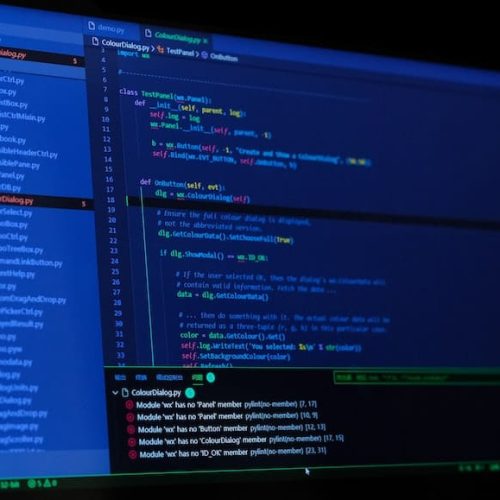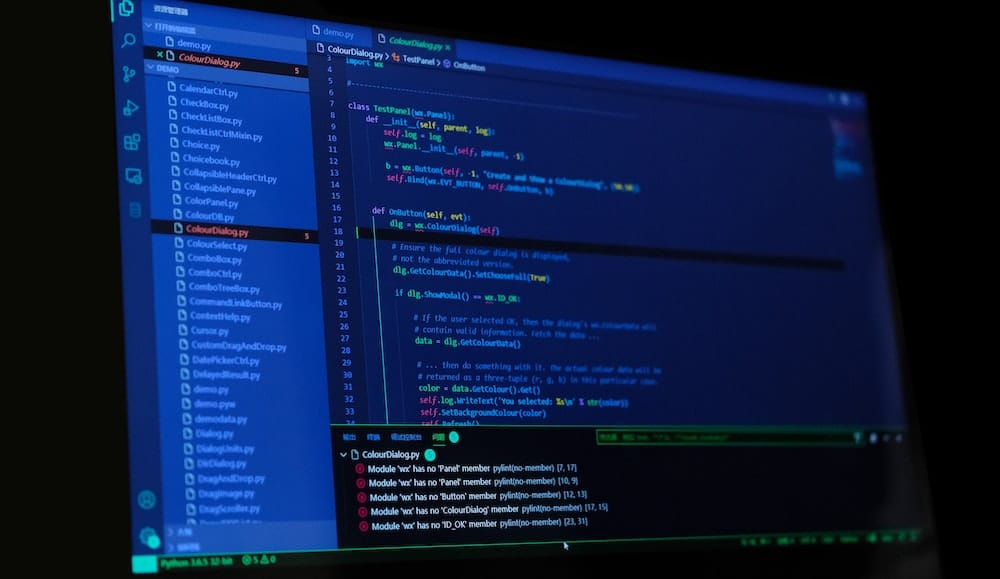In the realm of modern database management systems, MariaDB and MySQL stand as two prominent players, each offering unique strengths and capabilities.
This comparison delves into the key differences and essential insights necessary for understanding and leveraging these platforms.
From their historical evolution to architectural disparities, feature sets, compatibility, security, and community support, this exploration aims to provide a comprehensive understanding of the nuances between MariaDB and MySQL.
For an audience seeking innovation in database technologies, this analysis serves as a valuable resource, offering strategic insights to inform decision-making and maximize the potential of these powerful data management solutions.
History and Origins
The history and origins of MariaDB and MySQL can be traced back to their common origins in the 1990s. MySQL was initially developed by a Swedish company, MySQL AB, founded by David Axmark, Allan Larsson, and Michael ‘Monty’ Widenius. It quickly gained popularity due to its speed, reliability, and ease of use.
In 2008, Sun Microsystems acquired MySQL AB. Meanwhile, MariaDB, a fork of MySQL, was created by the original developers of MySQL in response to concerns over the acquisition by Oracle Corporation in 2009. MariaDB aimed to maintain compatibility with MySQL while ensuring its continued open-source nature.
This historical significance led to the evolution of both databases, with MariaDB focusing on community-led innovation and open collaboration, while MySQL continues to be developed and supported by Oracle.
Architecture and Performance
Architectural design and performance benchmarks of MariaDB and MySQL demonstrate their distinct approaches to database management and system optimization.
Key differences between MariaDB and MySQL in terms of architecture and performance include:
Scalability and optimization: MariaDB offers superior scalability features, such as parallel replication and multi-source replication, which enable efficient handling of large workloads and high transaction rates. In contrast, MySQL’s scalability is limited by its reliance on single-threaded replication and InnoDB storage engine constraints.
Benchmarking and comparisons: Benchmarking tests reveal that MariaDB outperforms MySQL in various scenarios, especially in terms of complex queries, high concurrency, and overall throughput. This performance advantage is attributed to MariaDB’s use of advanced optimization techniques and enhanced query execution plans.
Storage engines and performance tuning: MariaDB provides a wider range of storage engines, including Aria, TokuDB, and ColumnStore, which offer improved performance and flexibility compared to MySQL’s storage engine options.
Features and Capabilities
In examining the features and capabilities of MariaDB and MySQL, it is essential to compare their functionality and performance across a range of database management tasks.
Both MariaDB and MySQL offer robust data storage capabilities, supporting various data types and storage engines to meet diverse application requirements. However, MariaDB includes additional storage engines such as Aria and TokuDB, providing enhanced performance and scalability.
Transaction management is a critical aspect where MariaDB and MySQL showcase differences. While both databases support ACID-compliant transactions, MariaDB offers advanced features like parallel replication and multi-source replication, enhancing transaction management efficiency in complex environments.
Additionally, MariaDB’s thread pool feature further optimizes transaction handling, especially in scenarios with high concurrency.
These distinctive features and capabilities demonstrate the innovative advancements present in MariaDB for modern database management needs.
Compatibility and Support
How extensively does MariaDB and MySQL maintain compatibility and provide support for diverse operating systems and platforms?
Cross-platform Compatibility: Both MariaDB and MySQL are designed to be highly compatible across various operating systems such as Windows, Linux, macOS, and more, ensuring seamless deployment and operation in diverse environments.
Backward Compatibility: Both database management systems prioritize backward compatibility to ensure that new versions can work with applications designed for older versions, thus safeguarding existing investments and easing the upgrade process.
Technical and Community Support: MariaDB and MySQL offer robust technical support options for enterprise users, including professional services and customer support. Moreover, they benefit from active and vibrant community support, providing a wealth of resources and expertise for users seeking innovative solutions and best practices.
Community and Development
What role do the respective communities and development processes play in shaping the ongoing evolution of MariaDB and MySQL? Both MariaDB and MySQL have active and vibrant communities that contribute significantly to their development. The community contributions include bug fixes, new features, and performance enhancements, which are essential for the continuous improvement of these database management systems. The development roadmap for both MariaDB and MySQL is influenced by the input and feedback from their respective communities, ensuring that the evolving needs of users are met. Below is a comparison table showcasing the key aspects of the community and development processes for MariaDB and MySQL:
| Aspect | MariaDB | MySQL |
|---|---|---|
| Community Size | Large and growing | Massive and established |
| Release Cycle | Regular, with frequent updates | Regular, with timely releases |
| Community Involvement | Actively engaged and responsive | Engages with community feedback |
| Development Focus | Emphasis on performance and scalability | Focus on usability and enterprise needs |
Security and Maintenance
The security and maintenance processes for MariaDB and MySQL play a critical role in ensuring the reliability and integrity of these database management systems. They focus on continuous improvement and robust protection against vulnerabilities.
Security Measures: Both MariaDB and MySQL employ advanced security measures such as role-based access control, firewall settings, and encryption to safeguard sensitive data from unauthorized access.
Database Maintenance: Regular maintenance tasks including index optimization, query performance analysis, and backup scheduling are essential for the efficient operation of both MariaDB and MySQL databases.
Data Encryption and Vulnerability Assessment: Both systems offer data encryption at rest and in transit to ensure data security. They also provide vulnerability assessment tools to identify and address potential security weaknesses.
Implementing these security measures and database maintenance practices are crucial for the overall performance and protection of MariaDB and MySQL.
Use Cases and Recommendations
When considering the use cases for MariaDB and MySQL, it’s important to analyze the performance differences and determine the best practices for recommendations.
Understanding the specific demands of your applications and workload patterns will help in making an informed decision on which database management system to utilize.
Performance Differences in Use Cases
Understanding the performance differences between MariaDB and MySQL in various use cases is crucial for making informed database management decisions. When benchmarking databases and considering scalability, the following factors should be taken into account:
Read-Intensive Workloads: For applications with heavy read operations, MariaDB’s storage engines like Aria and TokuDB may provide better performance due to their improved read efficiency.
Write-Intensive Workloads: MySQL, with its InnoDB storage engine and its consistent performance in write-heavy scenarios, may be more suitable for applications with high write operations.
Mixed Workloads: In scenarios with a mix of read and write operations, the choice between MariaDB and MySQL should be based on a thorough analysis of specific workload characteristics, application requirements, and scalability needs.
Best Practices for Recommendations
Optimizing database selection involves evaluating use cases and making informed recommendations based on specific requirements and performance considerations. To achieve this, it’s crucial to employ optimization techniques and benchmarking to assess the scalability and resource management capabilities of MariaDB and MySQL. Below is a comparison table to aid in making recommendations based on various use cases:
| Use Case | Recommendation |
|---|---|
| Small-scale application with read-heavy workload | MySQL |
| Large-scale application requiring high availability and scalability | MariaDB |
| Resource-constrained environment with a focus on cost-effectiveness | MySQL |
Careful consideration of these use cases and the unique strengths of MariaDB and MySQL will ensure optimal database selection for diverse application requirements.
Frequently Asked Questions
Can You Provide a Comparison of the Licensing and Pricing Models for Mariadb and Mysql?
When comparing the licensing and pricing models for MariaDB and MySQL, it is essential to consider the feature comparison and licensing terms. Both databases offer various licensing options, and their pricing models often depend on the support and services required.
What Are the Differences in Terms of Data Replication and Clustering Capabilities Between Mariadb and Mysql?
In terms of data replication and clustering capabilities, MariaDB generally offers better performance and scalability compared to MySQL. Its Galera Cluster provides synchronous multi-master replication, enhancing high availability and scalability for modern database environments.
How Do Mariadb and Mysql Handle Data Integrity and Consistency in Transactions?
Both MariaDB and MySQL ensure data consistency and integrity in transactions through ACID compliance, enabling reliable transaction handling. MariaDB’s performance and scalability enhancements, such as parallel replication, further bolster its capabilities in handling high transaction volumes.
Are There Any Significant Differences in the Backup and Restore Functionality Between Mariadb and Mysql?
When comparing backup options, performance is a significant factor. Mariadb and Mysql offer similar backup functionality. However, differences arise in the restore process. Mariadb’s compatibility with Mysql backups provides a seamless transition, ensuring data integrity.
Can You Explain the Differences in the Tools and Utilities Available for Monitoring and Managing Mariadb and Mysql Instances?
When it comes to monitoring and managing MariaDB and MySQL instances, differences arise in performance tuning utilities and security features such as encryption. MariaDB offers advanced performance tools, while MySQL emphasizes robust security measures.
Image Credits
- “MacBook Pro with images of computer language codes” by Caspar Camille Rubin (featured)








